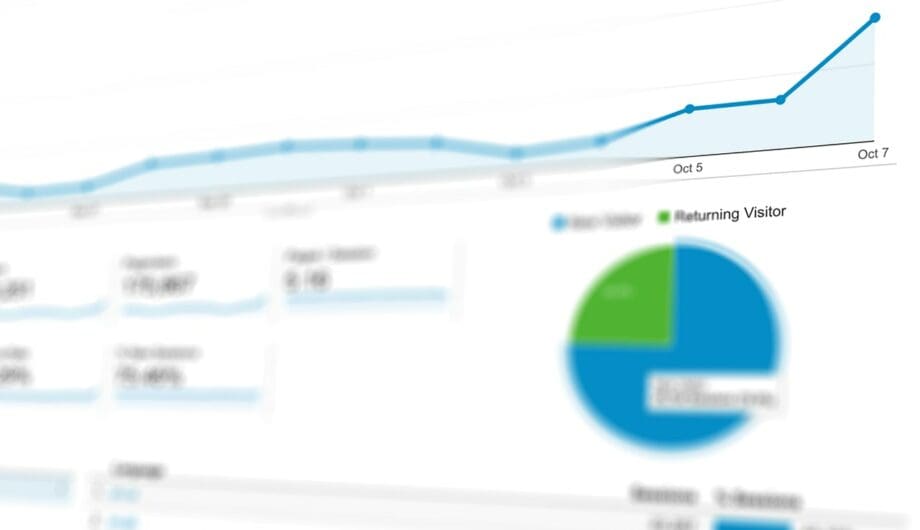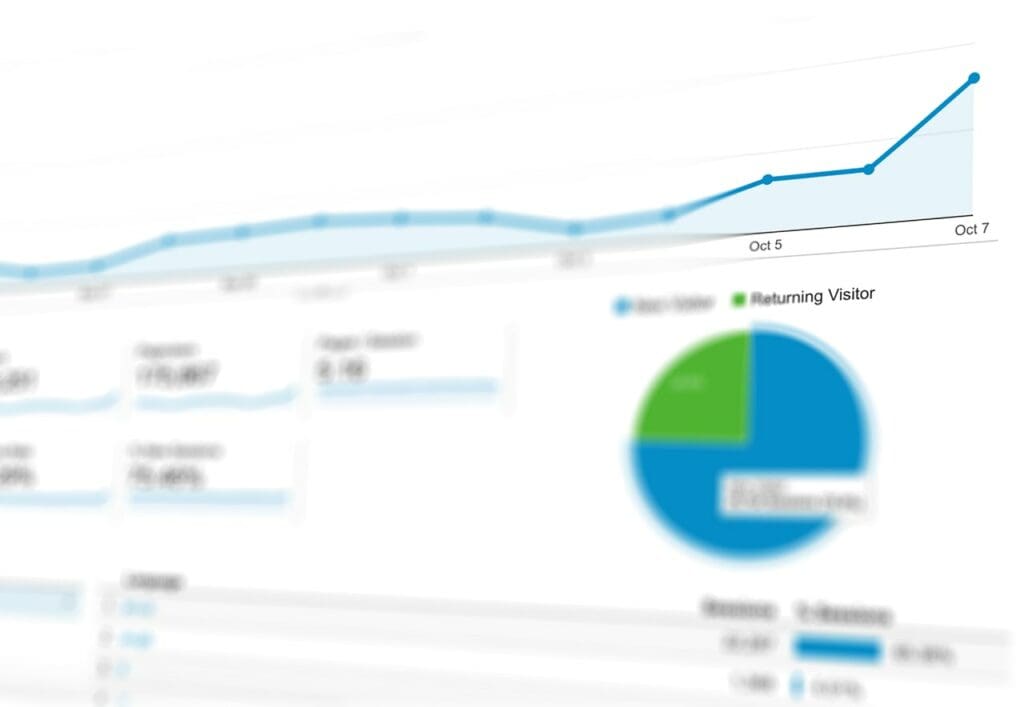
SEO is a process by which we try to direct more traffic to your website through organic search. We try to make sure that searchers looking for what you offer can find you. We do this through keyword research, on-page optimization, and technical SEO. It can be a lot more complicated than this simple explanation, which you can explore more in other posts in this blog.
Once we finish optimization on your site, we hope to see an increase in organic traffic to your site, as well as an increase in your ranking for the keywords we selected. Additionally, we hope to see an increase in the conversion rate and click through rate.
Any good SEO project should have a metric to measure success. How do we know if our SEO worked? How do we know if it failed? How do we know anything?
To know, we have to set up a metric, and then we have to measure it. Is anything changing?
I always say SEO is a marathon, and it can take a long time to start seeing results. This varies incredibly, particularly by industry. I’ve seen movement happen in just a couple of weeks for keywords in some industries, and months to a year in other industries. A lot will depend on how steep your competition is for those keywords. If you’ve got a million other sites vying for the top ten spots, it’s a lot harder to break into the results.
This is why SEO maintenance is important.
What is SEO Maintenance?
SEO maintenance is the process of working on improving a site’s visibility in the SERPs. Remember how I said every SEO project needs a metric? We have to use those metrics to make sure our SEO is working. Here’s a breakdown of some basic SEO maintenance tasks.
Monitoring:
When we perform SEO maintenance, one of the first things we set up is keyword monitoring. During our initial SEO, we performed keyword research to help us select the right keywords for your website. Now that we’ve selected and optimized for those keywords, we have to make sure we’re tracking them to see how they are doing. We have special tools that allow us to track where your site is ranking for the selected keywords from week to week.
This is important. While we don’t guarantee any placement, what we do want to see is growth. I don’t expect that we’ll finish the SEO and see your site jump to #1 the next day. That’s not how SEO works. But, I would hope to see growth over the next several months.
However, if we’re not monitoring your keywords, then we won’t have any idea how your site is ranking. This is one reason why SEO maintenance is important.
Analyzing
Another aspect of SEO maintenance is analytics. We are going to watch your site’s traffic and analyze what’s going on. Is more traffic coming to your site? Where is the the traffic coming from? What are those visitors doing on your site?
We can make a lot of educated guesses about how your SEO is doing by looking at what your visitors are doing. A few things we’ll be analyzing.

Click through Rate
The Click Through Rate (CTR) is the percentage of people who see your listing in the search engine results pages (SERPs) and then also click through to your site. We can track that in Google Analytics. Why is this important? Because if people are seeing your listing and not responding to it for some reason, then it suggests that they don’t think your site has the answer to their query. Then we need to analyze why that is, and possibly making changes to the meta data on your site to get a better CTR.
Organic Traffic
We want to see an overall increase in traffic to your site, of course, but there are factors that can sometimes make that not happen even if your organic traffic is increasing. So we make a point to filter your traffic to see just what’s going on with organic visitors, or website users who land on your site through search engine queries. This is important because other factors can affect overall traffic to your site, and with SEO, the only way to know if we’re seeing success is to measure organic traffic.
Let me interject here with a story. We performed SEO for a client and were monitoring the site for traffic. The keywords were moving up, but the overall traffic wasn’t changing at all, or even going down. However, when I filtered the traffic by organic visitors, the traffic actually had been going up. So what was going on? While traffic was increasing for the keywords we had chosen, there was a decrease in analytics spam. This is good, but it showed less traffic because the spam was gone, thus making it seem like the site was getting less traffic. However, since all the analytics spam were direct referrals, we were able to see that organic traffic was going up even as overall traffic went down.
Bounce Rate
Another thing we’re analyzing after SEO is the bounce rate. Bounce rate is the percentage of users who view one page and leave your site without looking at any other pages. Usually this means they aren’t finding what they are looking for. (Although other times it means they found exactly what they are looking for and called you.) We typically notice a higher bounce rate on blog posts than anywhere else on the site. If a user lands on the blog page versus another page, then probably they read what they needed and left.
If we see a lot of traffic bouncing off specific pages, then t hat might indicate that the page isn’t performing well. We may need to reevaluate the content, add a link or button, or make visual changes.
Making Improvements
The point of monitoring and analyzing what’s going on with your website is necessary to make changes for ongoing improvements. If you go with the ‘set it and forget it’ model of SEO, not only do you not know if the SEO has made any progress, but you also aren’t making continual progress.
For one client who we perform SEO maintenance, I noticed after several months that one keyword in particular was making zero progress. That keyword was just not breaking into the ranks. I dug a little deeper into it and learned that while it was a relevant keyword, their site just wasn’t exactly what Google thought users were looking for when they typed in that keyword. So I did more keyword research and found another keyword that I thought would be more appropriate. I reoptimized that page for the new keyword, and within a month saw the site ranking for that keyword. It wasn’t on page 1, but it was in the results which was better than what had happened with the previous keyword after many months with no progress. And the goal, of course, is to continue to see progress on that keyword.
Finding New Opportunities
Another goal of SEO maintenance is finding new opportunities to draw more traffic to your site. Maybe a new keyword opportunity presents itself, or we see a new trend that didn’t exist before. These are opportunities we can use to get more organic traffic coming to your site. If we aren’t monitoring your site and looking for these opportunities, you may miss out!
SEO is always changing
One of the most important reasons for SEO monitoring is because SEO is always changing. Google issues algorithm updates all the time. If we’re not watching, your site could be hit after a change and you wouldn’t even know it. When we’re watching, we can tell when your site is doing better or doing worse. We can evaluate why that may be, and change course as needed.
SEO maintenance is an important aspect of SEO.
Amy Masson
Amy is the co-owner, developer, and website strategist for Sumy Designs. She's been making websites with WordPress since 2006 and is passionate about making sure websites are as functional as they are beautiful.
